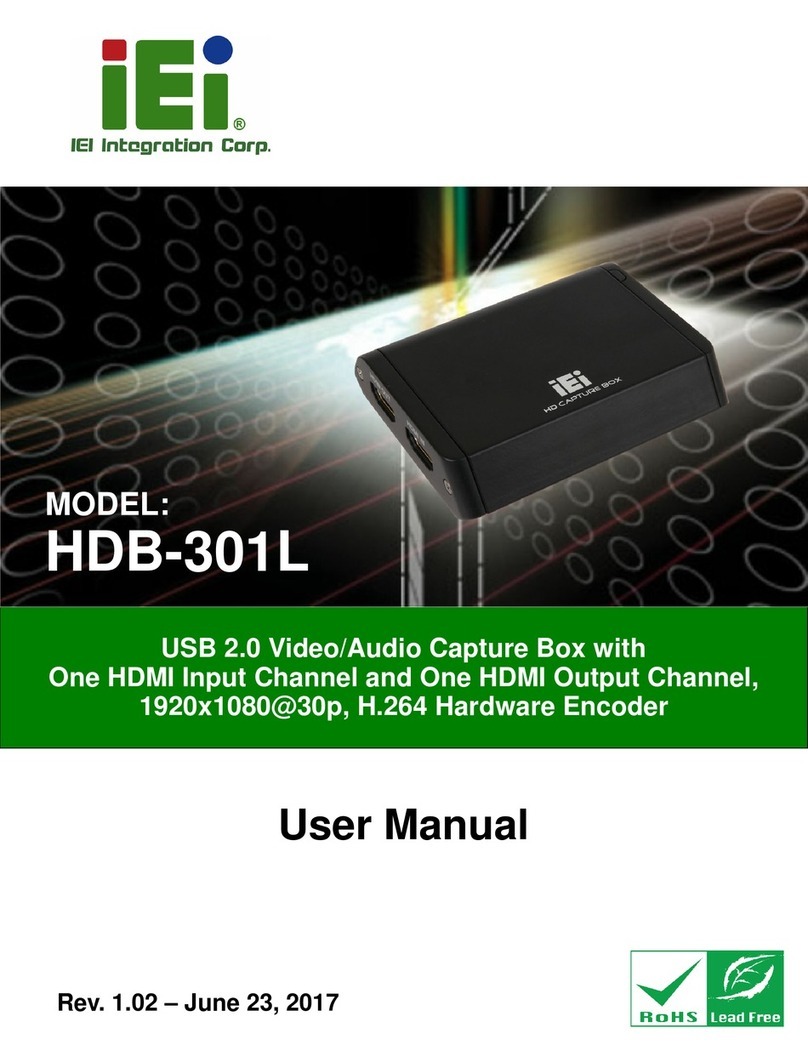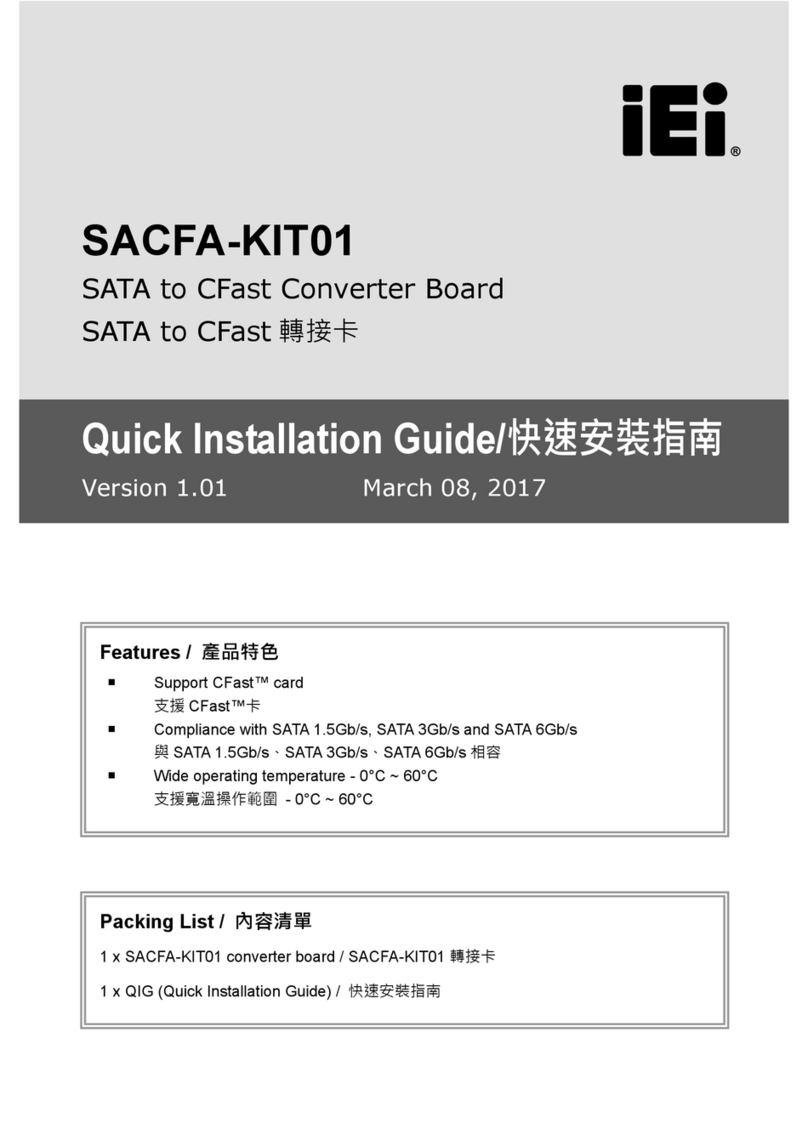IDDUPS-6364120A QIG IEI Technology Corp. Page 6
8. Penetration
“Do not drive a nail into the battery, strike it by
hammer, or tread it”
As the battery might be broken or deformed and
then it will be short-circuited, it caused the
generating heat, smoke, rupture or flame.
9. Impact
“Do not give battery impact or throw it”
The impact might cause leakage, heat, smoke,
rupture, and/or fire of cell in the battery.And also if
the protection circuit in the battery is broken, the
battery will be charged at abnormal voltage or
current, and abnormal chemical reaction might
occur. It might cause leakage, heat, smoke rupture,
and/or fire.
10. Deformation
“Do not use the battery with conspicuous damage
or deformation”
It causes the generating heat, smoke, rupture or
flame.
11. Soldering
“Do not make the direct soldering on battery”
As the insulator is melted by heat or the gas
release vent (or safety function) is broken, it
caused the generating heat, smoke, rupture or
flame.
12. Reverse Charge and Overdischarge
“Do not reverse polarity (and terminals)”
On charging, the battery is reverse-charged and
abnormal chemical reaction occurs.And also,
there may be case that unexpected large current
flows on discharging. These cause the generating
heat, smoke, rupture or flame.
13. Reversed Polarity Use
“Do not reverse-charge or reverse-connect”
The battery has polarity. In case the battery is not
connected with charger or equipment smoothly, do
not force them to connect and do check polarity of
battery. If the battery is connected to opposite
polarity with charger, it will be reverse-charged and
abnormal chemical reaction will occur. It causes
the generating heat, smoke, rupture or flame.
14. Connect Battery to the Plug
“Do not connect battery to the plug socket or
car-cigarette-plug”
Added high voltage to the battery, the excessive
current will flow in it and then it will cause the
generating heat, smoke, rupture or flame.
15. Inappropriate Use for Other Equipment
“Do not use battery for other equipment”
If the battery is used for unspecified equipment, it
will deteriorate its performance and cycle-life.At
worst, abnormal current will flow or battery may
generate heat, smoke, rupture or flame.
16. Leakage
“Do not touch a leaked battery directly”
in case the leaked electrolyte gets into eyes, wash
them with fresh water as soon as possible without
rubbing eyes. And then, see a doctor immediately.
If leave damaged eyes undone, it will cause
eye-trouble.
WARNING:
1. Mixed Use
“
Do not use Lithium ion battery in mixture”
Do not use Lithium ion battery with the primary
batteries or secondary batteries whose capacity
kind or maker is different, if do that, the battery will
be discharged or charged excessively in use. And
it may cause the generating, smoke, rupture or
flaming because of the abnormal chemical
reaction in cells.
2. Ingestion
“Keep the battery away from babies”
Keep the little battery out of the reach of babies in
order to avoid troubles by swallowing. In case of
swallowing the battery, see a doctor immediately.
3. Charging Time
“Do not continue to charge battery over specified
time”
If the battery is not finished charging over
regulated time, let it stop charging. There is
possibility that the battery might generate, smoke,
rupture or flame.
4. Store
“Do not get into a microwave or a high pressure
container”
It causes the generating, smoke, rapture or flaming
because of a sudden heat or damage of sealing
condition of battery.
5. Leakage
“Do not use a leaked battery nearby fire”
If the liquid leaks from the battery (or the battery
gives out bad smell), let the battery leave from
flammable objects immediately. Unless do that, the
electrolyte leaked from battery will catch fire and it
will cause the smoke, flaming or rupture of it.
6. Rust, Changing Color and Deformation
“Do not use an abnormal battery”
In case the battery has bad smell or is generated
its changing color or deformation or causes
something wrong in using (includes charging and
storage), let it take out from equipment or charger
and do not use it. If an abnormal battery is used, it
will generate, smoke, rupture or flame.
CAUTION:
1. Use Under Strong Sunshine
Do not use or leave the battery under the blazing
sun (or heated car by sunshine). The battery may
generate heat, smoke or flame. And also, it might
cause the deterioration of battery’s characteristics
or cycle life.



























